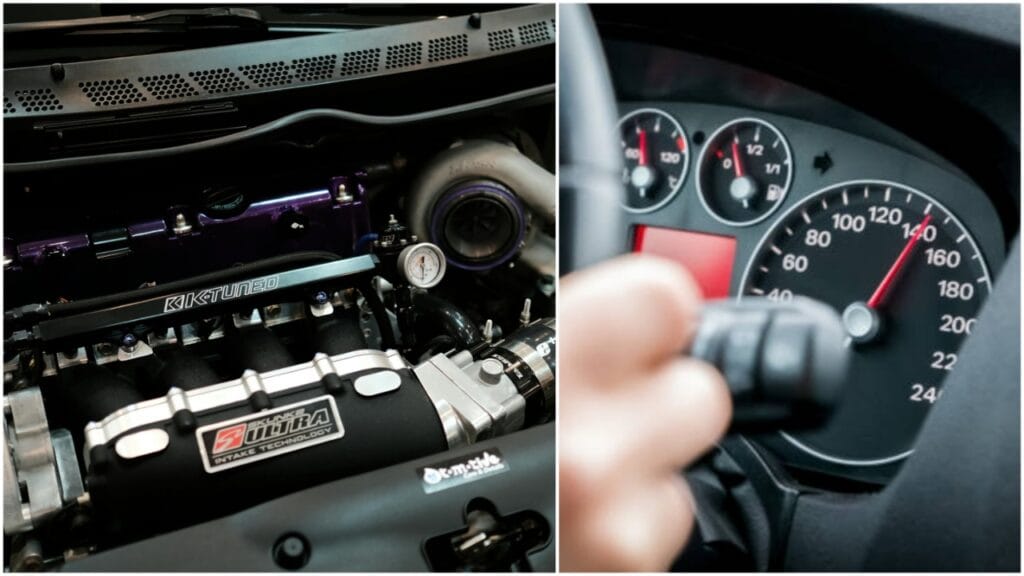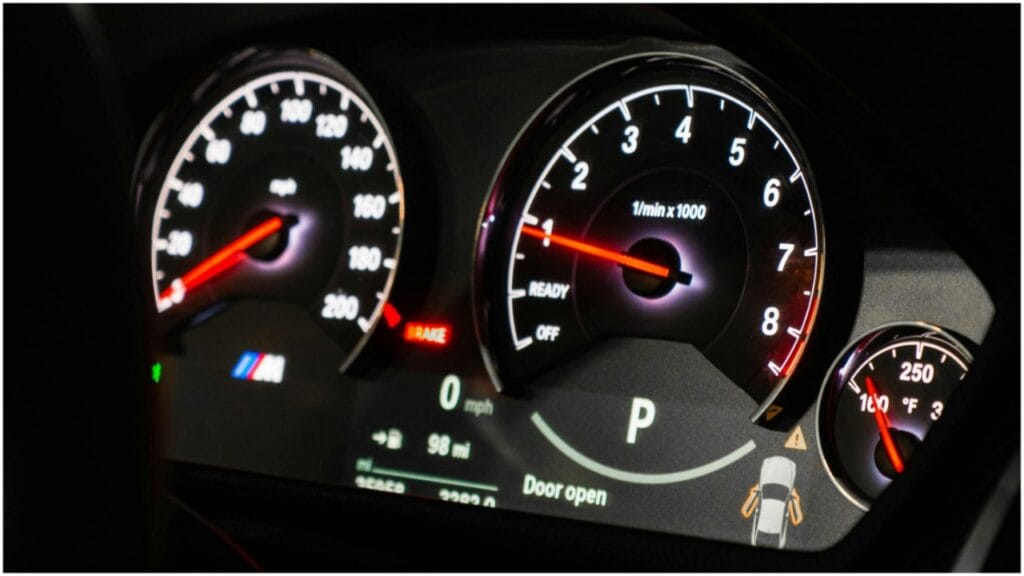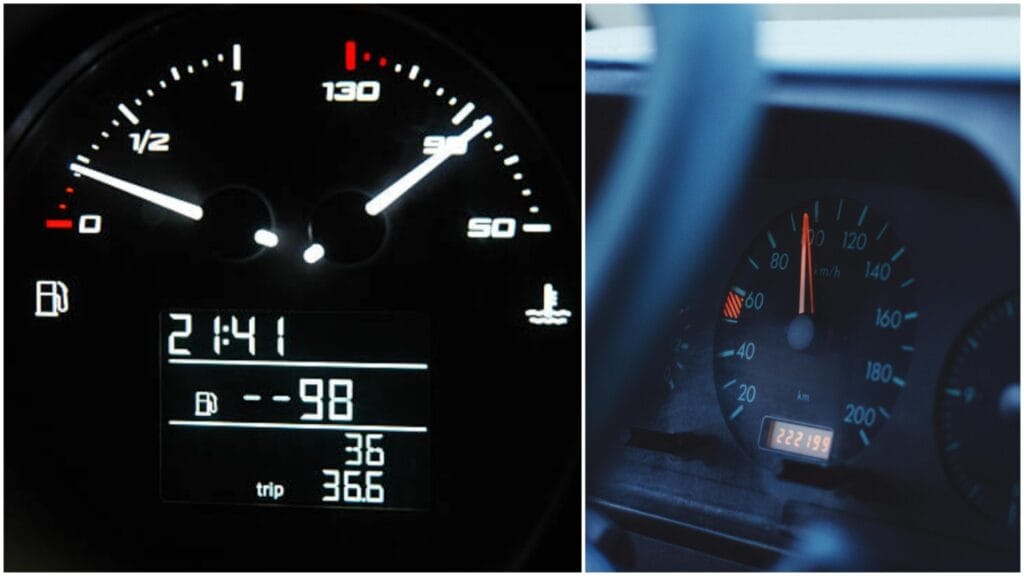Slow acceleration with high RPM in an automatic car hints at a more profound issue under the hood. When you press the gas, the engine roars, and the RPM needle climbs, but your speed barely budges. This points to a slipping transmission.
The gears aren’t gripping like they should, so the engine’s power isn’t reaching the wheels. It can happen from low transmission fluid or, sometimes, old fluid that’s lost its kick.
A worn-out torque converter can also be the culprit, leaving plenty of noise but slightly advanced motion. A clogged air filter or fuel issue can also cause sluggish acceleration.
These problems make the engine work harder than it needs to. This can cause significant problems in a car. Solving the problem is very important. Follow the instructions below to understand why it happens and how to solve it in detail.
Understanding What’s Happening with RPMs
The tachometer needle races up, yet your car creeps ahead. It feels almost like your car is holding back. RPM, or revolutions per minute, is about how fast your engine spins.
When your engine spins faster, it should mean more power and, logically, faster speed.
But there’s a disconnect when the RPMs are high, and your car still moves like it’s dragging its feet. It’s usually between the engine and the wheels.
This is where the transmission comes in. The transmission is supposed to smoothly transfer all that power to the wheels, making your car go. When that fails, you get high RPMs but low acceleration.
The Culprits Behind High RPM and Slow Acceleration

Transmission Fluid Problems Transmission fluid is vital. This is the liquid that keeps your transmission cool and lubricated.
Low or old fluid can make shifting feel like wading through syrup. When the liquid is not flowing correctly, the engine spins without enough “grab” on the gears.
This leads to high RPMs without a boost in speed. A clogged fuel filter is like drinking a thick milkshake through a tiny straw.
Not enough fuel reaches the engine, so the car can’t function as it should. High RPMs are the result of the engine working harder to suck in fuel.
Failing Torque Converter The torque converter is a critical piece in automatics. It’s the go-between for the engine and transmission.
When the torque converter fails, it doesn’t send power properly, which can cause the engine to rev up without moving the car along.
Worn Clutch Plates or Bands Yes, automatics have clutches, too. Over time, clutch plates and bands wear down, leading to slipping.
Slipping means the gears can’t “catch” as they should. So, the engine spins, the RPMs rise, but the wheels just aren’t feeling.
How to Diagnose This Issue Yourself
Check Transmission Fluid Grab a paper towel, find the transmission dipstick, and check your fluid. It should be clear, or at least a pinkish red, and there should be enough.
Dark or burnt-smelling fluid? It’s time for a change. It also means your transmission is working overtime.
Take Note of Sounds and Vibrations. Listen to how the car sounds when it’s revving high. Does it feel like something’s vibrating?
A chattering sound or a slight “thudding” sensation? These point toward issues with the torque converter.
Look for Slipping Gears. Pay attention to how your car shifts. If it jerks, lags, or feels sluggish between gears, your transmission gives you a big hint.
Slipping gears often result from transmission fluid issues. They can also show clutch wear. Another possibility is trouble with the torque converter.
How to Solve These Common Problems

Once you’ve identified the problem, it’s time to start fixing it. Some issues are DIY jobs, while others are more complex. Here’s a breakdown of how to tackle the big ones.
Refill or Replace Transmission Fluid. If your transmission fluid is low, refill it. If it’s burnt, a quick change is all you need. If you’re comfortable with getting under the hood, you can do this yourself.
Fresh transmission fluid can smooth out shifts, reduce high RPMs, and get you back on the road. Replace the Fuel Filter Clogged fuel filter? It’s often an easy fix and doesn’t need a mechanic.
Fuel filters get dirty over time, and a fresh one can give your engine the fuel it needs. This will help with power delivery and reduce those revs.
Repair or Replace the Torque Converter If it’s the torque converter. Unfortunately, this isn’t a simple fix. This part requires removing the transmission, so you must see a mechanic.
A failing torque converter often produces rough idle or strange noises, especially when shifting.
Preventing Slow Acceleration and High RPM Problems
Change Transmission Fluid Regularly Regular transmission fluid changes are a lifesaver. Dirty fluid doesn’t just make your car sluggish; it can also shorten the life of your transmission.
Aim to change it according to your car’s recommended maintenance schedule. Don’t Ignore Signs of Trouble. High RPMs and slow acceleration don’t happen overnight.
Your car will usually give you warning signs before things get serious. Pay attention to any new sounds, vibrations, or performance issues. The sooner you catch them, the less you’ll pay for repairs.
When It’s Time to See a Mechanic
Not every issue can be fixed with a fluid change or filter replacement. If you’re still dealing with high RPM and low speed, try the easy stuff first. If the problem persists, it is time to bring in a professional.
Sometimes, the problem can run more profoundly, such as internal transmission issues, worn-out clutch bands, or engine troubles. These are best handled by someone with the tools and knowledge to examine your car’s systems.
Wrapping Up: Taking Charge of Your Ride’s Performance

Slow acceleration and high RPM don’t have to ruin your ride. You can figure out what is going on and take steps to fix it. You need to check fluid levels or replace a filter.
In some cases, you even need to see a mechanic. Taking action will make a world of difference. Your car’s performance shouldn’t be a mystery or a constant source of frustration.
With the proper maintenance and an eye for issues, you can tackle problems effectively. Some hands-on fixes will help you keep that RPM needle and acceleration pedal in sync. Here’s to smooth rides and engines that purr, not roar aimlessly.
The Silent Signs of Transmission Trouble
Sometimes, it’s about more than just high RPMs and slow acceleration. There are quieter signs your car shows when things are going sideways. There be a little whine when you’re shifting gears.
You notice a strange smell after a long drive. It feels like your car is “hunting” for the right gear. These are whispers that something’s not right.
When It Feels Like the Engine Is Struggling
Air filters can clog, spark plugs fail, and fuel injector issues can cause the same dragging feeling when you press the gas.
The engine works harder, but you’re not getting that power transfer. Clean filters and regular tune-ups can keep the engine in harmony with the transmission.
The Impact of Driving Style on Acceleration

Believe it or not, your driving habits can play a role. Aggressive driving, quick stops, and sudden starts can wear down parts faster.
Your transmission shifts more often, heating things under the hood. So, if you’re a fan of that pedal-to-the-metal style, remember: it can lead to problems sooner.
The Hidden World of the Transmission Control Module
Modern automatics are complex. The transmission control module (TCM) is a little brain that controls when and how your car shifts gears.
If it’s not working right, your RPMs can go haywire. Sometimes, a simple Software update can solve the issue; other times, the TCM needs replacing.
Most people are unaware of this car part, yet it can significantly impact performance.
The Role of Tires in Acceleration Issues
Surprisingly, tires can affect acceleration. If they’re worn or uneven, they can create drag.
Your engine and transmission work harder to get you moving, raising RPMs but not speed.
Proper tire pressure and rotation help keep things smooth. Tires are part of that perfect sync that gives you a clean, steady drive.
The Reality of Transmission Wear Over Time
No matter how well you care for your car, transmissions wear out. They’re full of moving parts, constantly shifting, adapting, and transferring power.
Over time, the gears, clutches, and bands wear down. Regular maintenance slows this process but doesn’t stop it.
A transmission rebuild or replacement is best if everything else has been checked.
When Fluid Quality Starts to Decline

Transmission fluid doesn’t last forever. It’s meant to be slick and cool, keeping parts gliding smoothly.
But over time, it breaks down. It turns darker and thicker and even starts to smell burnt.
This old fluid loses its ability to reduce friction when your car struggles with acceleration.
FAQ’s
Automatic transmission high rpm before shifting?
When an automatic transmission holds high RPMs before shifting, it usually signals something isn’t right. The cause could be a low fluid level, a worn-out transmission filter, or even issues with the valve body.
Fluid plays a massive role in smooth shifts; if it’s low, the gears can struggle to engage correctly. Sometimes, the transmission computer acts up, misreading signals and delaying shifts.
Driving habits can also influence it—frequent hard accelerations can cause shifts to hold longer. If your car has higher RPMs before shifting, check it out. Make sure it’s not in sports mode or a manual setting.
Ignoring it can lead to overheating and other wear. A quick diagnostic check will reveal the root cause. Fixing it early can save the transmission and keep everything running smoothly.
Silverado revs high on startup?
If your Silverado revs high right at startup, it’s often the engine trying to stabilize itself. This can happen when it’s cold, as the engine needs more fuel to warm up quickly.
Sometimes, a dirty throttle body or a sticking idle air control valve can cause high revs when starting. These parts manage the airflow and idle speed.
The engine can race at the start if it is clogged or malfunctioning. Another possible cause is a vacuum leak, which can mess with the engine’s air-fuel balance and make it rev unexpectedly.
On newer models, the engine control module also sends the wrong signals. It’s best to check for any warning lights on the dash. Ignoring the high revs leads to more wear over time.
Silverado rpm fluctuation while driving?
Your Silverado’s RPMs fluctuating while driving usually show an issue. Something is not right in the engine or transmission. This can feel like a subtle surge.
It can even feel like a jerking motion. This is often due to inconsistent fuel or airflow. Dirty fuel injectors or a failing fuel pump can cause this, as they need help to supply fuel smoothly.
Another common culprit is the throttle position sensor, which monitors the gas pedal’s position. When it goes wrong, the engine struggles to keep a steady RPM.
Transmission issues, like slipping gears, can also lead to RPM fluctuations, especially if the transmission fluid is old or low.
A vacuum leak is also a problem, as it interferes with the engine’s air intake, throwing off the balance. Ignoring this can cause more severe engine or transmission wear.
Do a diagnostic scan. A quick check-up with a mechanic reveals what’s causing the roller-coaster RPMs.
3000 rpm when starting the car?
If your car revs up to 3000 RPM when you start it, the idle control system is faulty. Normally, engines start with a slight rev to stabilize.
Yet, jumping to 3000 RPM is higher than usual. A sticking idle air control (IAC) valve can cause this issue. A dirty throttle body is another potential cause.
They manage the air entering the engine at idle. If these parts are dirty or faulty, they allow too much air to enter, causing the engine to rev higher.
Another possibility is a vacuum leak, which disrupts the engine’s balance and can cause it to rev more aggressively at startup. Sometimes, the engine control module sends the wrong signal.
This high revving could be better, as it can lead to wear faster and overheating if left unchecked. Check for any trouble codes. Get a mechanic to inspect these components. These actions help lower that high idle and return your startups to normal.
Conclusion
Your car struggles with slow acceleration and high RPM. This is not just an annoyance; your vehicle signals that it needs attention.
By understanding common causes—from transmission fluid issues to engine or transmission wear—you can take action before problems worsen.
Performing regular maintenance is essential. Simple tasks like fluid changes and fuel system checks enhance your car’s performance.
They also contribute to its longevity. Listening to your car and responding to those little signs keeps your ride smooth and reliable.
Treat your car well, and it’ll reward you with steady, responsive drives for miles to come.

